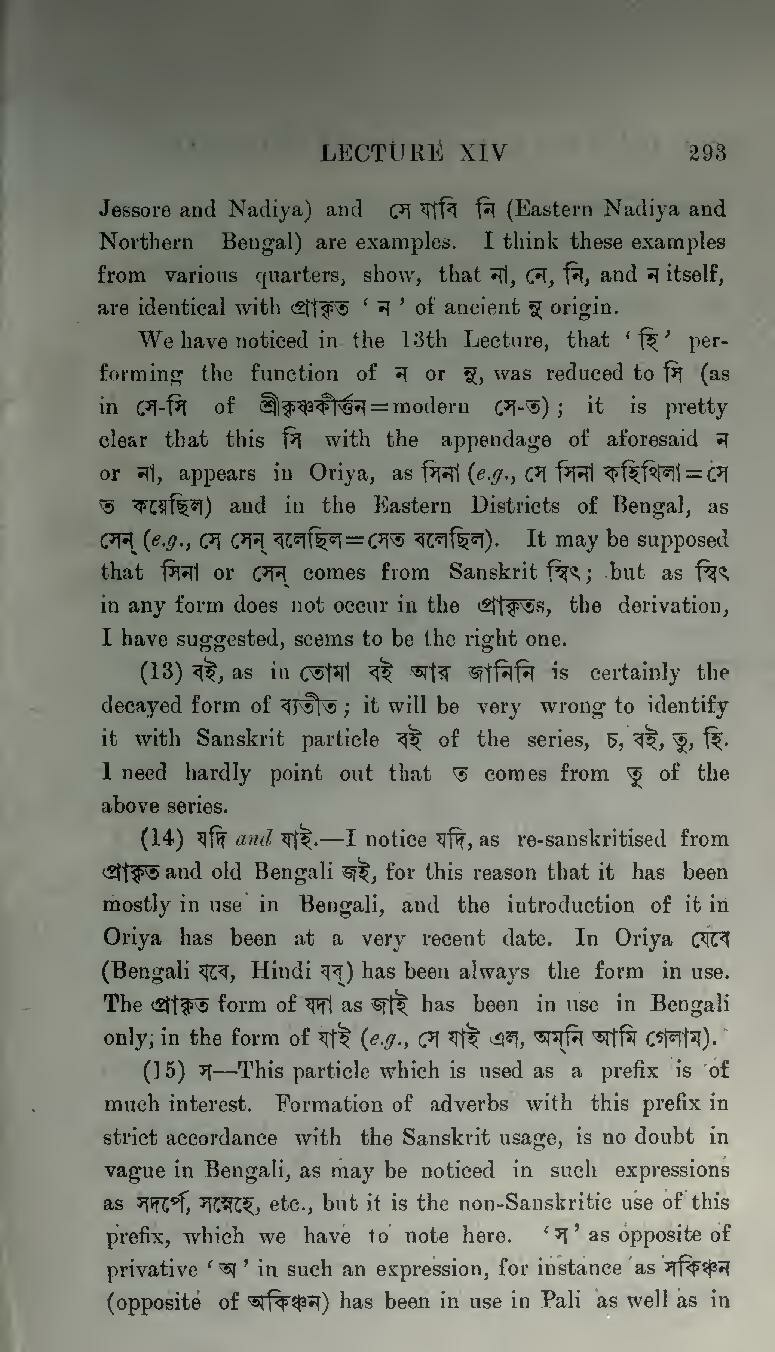Jessore and Nadiya) and সে যাবি নি (Eastern Nadiya and Northern Bengal) are examples. I think these examples from various quarters, show, that না, নে, নি, and ন itself, are identical with প্রাকৃত 'ন' of ancient নু origin.
We have noticed in the 13th Lecture, that 'হি' performing the function of ন or নু, was reduced to সি (as in সে-সি of শ্রীকৃষ্ণকীর্ত্তন = modern সে-ত); it is pretty clear that this সি with the appendage of aforesaid ন or না, appears in Oriya, as সিনা (e.g., সে সিনা কহিথিলা = সে ত কয়েছিল) and in the Eastern Districts of Bengal, as সেন্ (e.g., সে সেন্ বলেছিল = সেত বলেছিল). It may be supposed that সিনা or সেন্ comes from Sanskrit স্বিৎ; but as স্বিৎ in any form does not occur in the প্রাকৃতs, the derivation, I have suggested, seems to be the right one.
(13) বই, as in তোমা বই আর জানিনি is certainly the decayed form of ব্যতীত; it will be very wrong to identify it with Sanskrit particle বই of the series, চ, বই, তু, হি. I need hardly point out that ত comes from তু of the above series.
(14) যদি and যাই.—I notice যদি, as re-sanskritised from প্রাকৃত and old Bengali জই, for this reason that it has been mostly in use in Bengali, and the introduction of it in Oriya has been at a very recent date. In Oriya যেবে (Bengali যবে, Hindi যব্) has been always the form in use. The প্রাকৃত form of যদা as জাই has been in use in Bengali only; in the form of যাই (e.g., সে যাই এল, অম্নি আমি গেলাম).
(15) স—This particle which is used as a prefix is of much interest. Formation of adverbs with this prefix in strict accordance with the Sanskrit usage, is no doubt in vague in Bengali, as may be noticed in such expressions as সদর্পে, সস্নেহে, etc., but it is the non-Sanskritic use of this prefix, which we have to note here. 'স' as opposite of privative 'অ' in such an expression, for instance as সকিঞ্চন (opposite of অকিঞ্চন) has been in use in Pali as well as in
